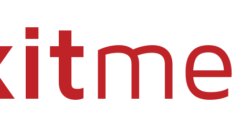Go Team!
Nov 1, 2003 12:00 PM,
Michael MacDonald
When you get right down to it, people are what this business is all about. Sure, we play with the hardware, we buy software tools to design systems, and we struggle to add value to the projects that we work on for our clients. But nothing can happen without the contribution that employees make. So unless you are a one-person shop, you will need to find motivated and productive employees to do much of the work necessary to get the job done.
Recruiting and developing great employees consistently requires a process. Unfortunately, most companies rely on luck more than process; that leads to inconsistent performance in the workforce. Good recruiting and employment practice starts with a job description. Having a well-defined job description gives you an employee specification that will allow you to test a prospective employee’s qualifications against a list of job requirements.
The job description has many benefits to your organization beyond this first stage. Once developed it helps employees understand what is expected from them. When it comes time to review the employee, the job description is a big component of measuring performance (as well as setting goals).
CARROT OR STICK?
Two major components of employees’ attributes will decide their contributions to your organization. The first component that employers tend to focus more attention on is employee skills. The second is employee motivation, which is the key to staff productivity. A motivated staff member lacking the best skills will usually outproduce a more highly skilled person with a poor attitude.
Approaches to managing staff in the industry seem to fall into three major categories: the carrot, the stick, and benign neglect. The carrot approach focuses on rewards for employee achievement. This usually is focused short to midterm, say 6 to 12 months. Positive reinforcements are a great motivation, but the more complex the formula for the payout, the less effective the incentive becomes. I once worked for a company with a reward contract so complicated and interlinked to other employees’ performance that it was out of any individual’s control to succeed. That had the perverse effect of aggravating the team, and it lowered morale and productivity. That’s not what you would want in your organization!
The stick approach uses the old tool of punishment if goals are not achieved. This method is usually not presented in writing to the employee, but it is well understood nonetheless. Highly destructive and usually employed by weak management, it manifests itself in many forms, like the blame game, in which employees are bullied and embarrassed in front of their peers. This form of management is in the minority but not rare. In the end, if employees can’t cut it, it’s time to let them go. Continuing to taunt an employee who does not meet the level of job performance necessary for the position is simply unprofessional.
The third category is benign neglect. In this scenario, management makes the assumption that “my team knows what to do, and I will leave it alone to do it.” Most would agree that the people hired had better know how to get the job done, yet those employees still want to be directed and get feedback from management to understand how they are doing.
TEAM SPIRIT
Aligning company objectives with employee goals is the key to unlocking employee potential in any company. What does that mean? It means that by understanding your employees’ goals, you map your company objectives to the staff in a way that allows your team to grow and meet its objectives — and yours — at the same time. By doing that, your company gets the multiplying effect of a highly motivated staff, a team that willingly does more because it understands the long-term benefits of its labor.
Although it is a simple concept, goal/objective alignment can be elusive, because it requires that management understands and agrees upon the company’s goals. That may sound elementary, but those who have line management experience will recognize that this is no small task. Another component of the alignment concept is the time required to listen to and understand employee goals. This takes real listening skills. Frequently, employees need help to develop their goals and to understand them.
The process of aligning company objectives with employee goals is complex and time-consuming, but the results are rewarding for both sides. Well-motivated, highly skilled employees can really deliver and will contribute more than you can imagine when project crunch time kicks in. The really big benefit comes from the harmony and loyalty that is the natural by-product; not only does your team produce more but it will stay with the company, reducing errors and training costs. Once you experience the power of alignment, you will never go back!
Michael MacDonaldhas been involved in the pro-audio industry for more than 20 years and is the principal of Pilot Business Strategies, a consulting firm for product marketing and business development issues. E-mail him at[email protected].










